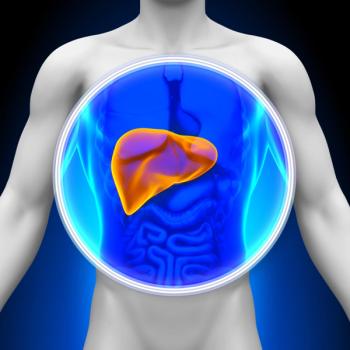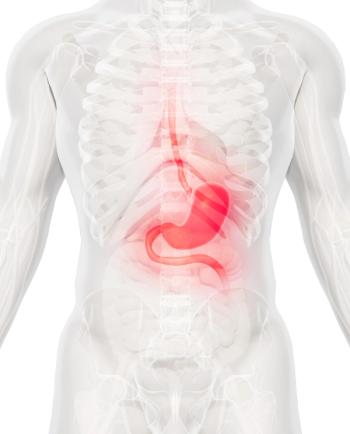
Microenvironment plays major role in tumor’s ability to grow and metastasize
DENVER—From angiogenesis to adhesion molecules to stromal factors, studies on the microenvironment offer a closer look at the cellular networks behind cancer. The microenvironment can also influence the body's access to therapeutic drugs and its ability to process those drugs.
DENVER-From angiogenesis to adhesion molecules to stromal factors, studies on the microenvironment offer a closer look at the cellular networks behind cancer. The microenvironment can also influence the body's access to therapeutic drugs and its ability to process those drugs.
First, new data on microRNAs suggest that the same set of microRNAs offers different prognostic values depending on a patient's race or ethnicity.
Upender Manne, PhD, an associate professor of pathology at the University of Alabama School of Medicine in Birmingham, found that the expression levels of microRNA-324-5p were higher when compared with noncancerous tissues in colorectal cancer tissues of white patients but lower in black patients. Increased expression was associated with an unfavorable prognosis in white patients, but decreased expression was associated with a favorable outcome in black patients (abstract 549).
"Our findings also suggest that in the evaluation of prognostic assessment of microRNAs, patient race/ethnicity should be considered," Dr. Manne said.
Dr. Manne and colleagues analyzed colorectal cancer samples collected from 26 African American and 62 non-Hispanic Caucasian patients. The researchers identified five microRNAs that had higher expression in colorectal cancers, but there was a variance in the expression levels between races.
Dual targeting
A novel class of agents may knock out two molecules with a single punch, according to researchers from Atlanta and London. For their study, human domain antibodies selected against EGFR and VEGF were formatted into a fully human dual-targeting IgG (DMS3008). The researchers deployed the antibody in Tu212 head and neck squamous cell carcinoma cells expressing high levels of EGFR and able to undergo antibody-VEGF-EGFR endocytosis.
According to the results, when Tu212 cells were exposed to VEGF-488 (0.5 μg/mL) and DMS3008 (1 μg/ml), the level of internalized VEGF-488 measured by flow cytometry increased with time and could be completely diminished by an excess of VEGF. When Tu212 cells were pre-exposed to EGF (100 ng/mL) for one hour, however, VEGF-488 internalization was significantly abrogated, indicating that internalization was dependent on EGFR. The findings suggest that DMS3008 represents a novel class of agents with broad and versatile functional implications, the authors stated (abstract LB-163).
Vascular disrupting agent
CYT997, an orally available synthetic small molecule that is currently in phase II clinical studies, exhibits potent vascular disrupting activity in vivo even at very low doses. Australian researchers modeled this activity in vitro and found that CYT997 inhibited the proliferation of HUVEC primary endothelial cells at low nM concentrations. They evaluated the acute vascular effect of CYT997 on blood flow through tumor tissue in vivo with laser Doppler flowmetry to measure blood flow in a mouse model of metastatic colorectal cancer.
They found that oral administration of CYT997 led to a significant reduction in tumor blood flow 15 minutes post-administration and this effect persisted for up to 96 hours post-administration. In addition to vascular disrupting activity, CYT997 also caused G2/M cell cycle arrest and apoptosis of tumor cell lines (abstract LB-211).
Specific therapy for neuroblastoma
A set of kinase inhibitors demonstrated potent in vitro activity against drug-resistant and MYCN-amplified neuroblastomas cells. MYCN amplification is often seen in aggressive and chemoresistant tumors, explained investigators from the Karolinska Institutet in Stockholm and Uppsala University.
From a library containing 80 kinase inhibitors, they highlighted four tyrosine kinase inhibitors and their targets to determine a more specific therapy for high-risk neuroblastoma. The group noted that some compounds were more effective on the N-myc amplified cell lines with IC50 values below 5 μM and 10 μM. Others inhibited either PDGFR and to some extent EGFR or acted as a CDK inhibitor. Two compounds targeted a pathway not previously studied in neuroblastoma and were effective on all cell lines. Further studies are warranted to elucidate their exact mechanisms and to confirm their activity in vivo, they said (abstract 3207).
JAK mutations in pediatric ALL
Researchers suggested that treatment with experimental drugs addressing Janus-associated kinases (JAK) may help children diagnosed with acute lymphoblastic leukemia (ALL). These results expand the range of diseases associated with JAK mutations and show that lesions targeting multiple pathways, including lymphoid development (IKZF1), tumor suppression (CDKN2A/B), and tyrosine kinases (BCR-ABL1 or JAK), cooperate to induce aggressive ALL, according to the group.
Children who have mutations in the JAK tyrosine kinase gene tend to have very poor outcomes and a higher rate of recurrence of their leukemia, said Charles G. Mullighan, MD, from St. Jude Children's Research Hospital in Memphis, Tennessee.
"These mutations can currently be identified using standard genetic testing. Drugs are being developed that can be used against these JAKs, and JAK inhibition clearly warrants clinical evaluation in this subset of patients," Dr. Mullighan said. One of those drugs, XL019 (Exelixis), has shown early promise in phase I clinical trials, he said (abstract LB-92).
His group performed a genetic analysis in 221 children with B-progenitor acute lymphoblastic leukemia at high risk for relapse derived from a clinical trial conducted by Children's Oncology Group. The presence of JAK mutations was associated with a deletion of the genes IKZF1 and CDKN2A/B and poor outcome. The four-year incidence of relapse was 71% for patients with JAK and IKZF1 alterations, compared with 23% for patients with neither alteration.
Additional reporting by Shalmali Pal.
Newsletter
Stay up to date on recent advances in the multidisciplinary approach to cancer.
































































































